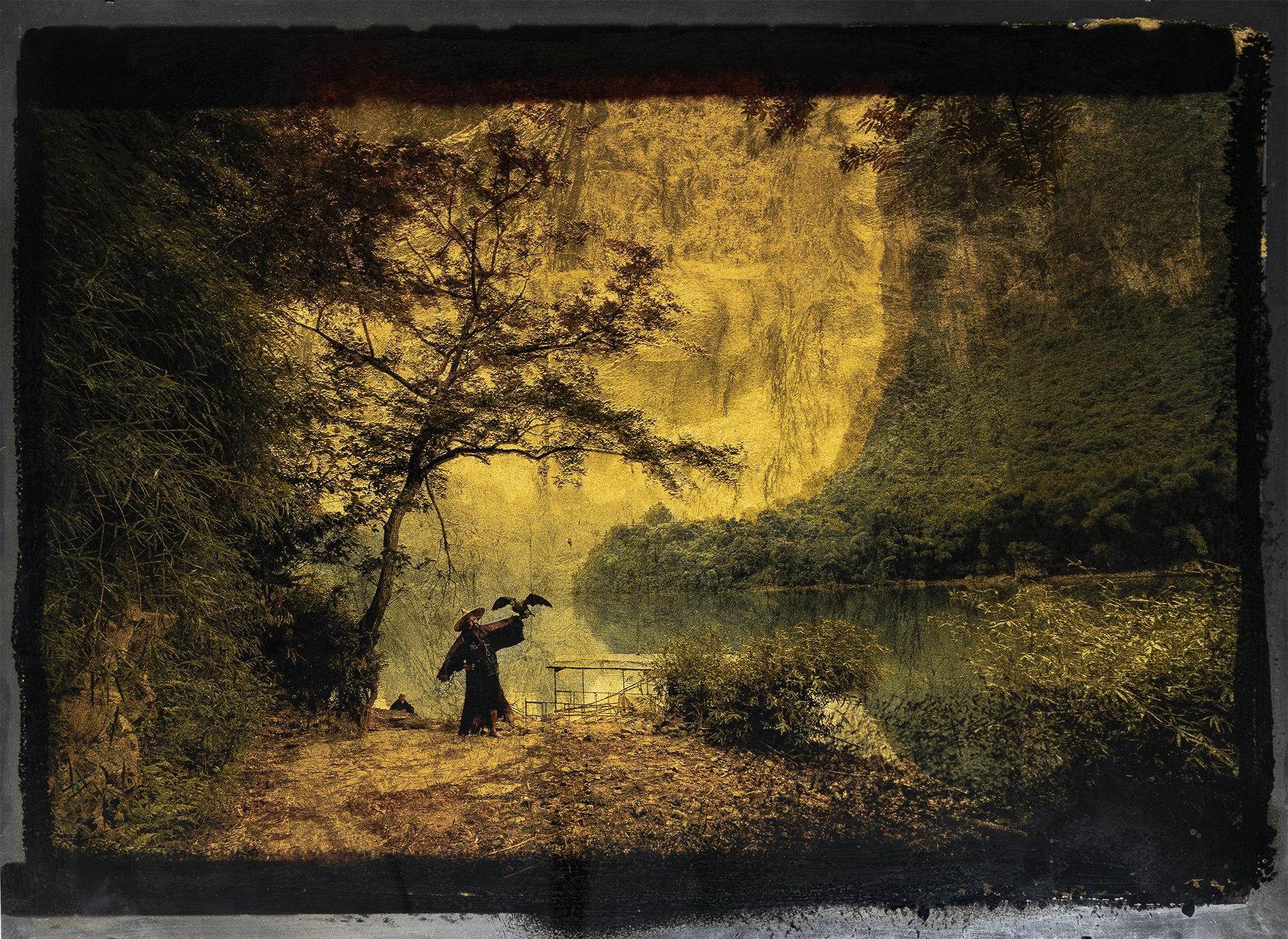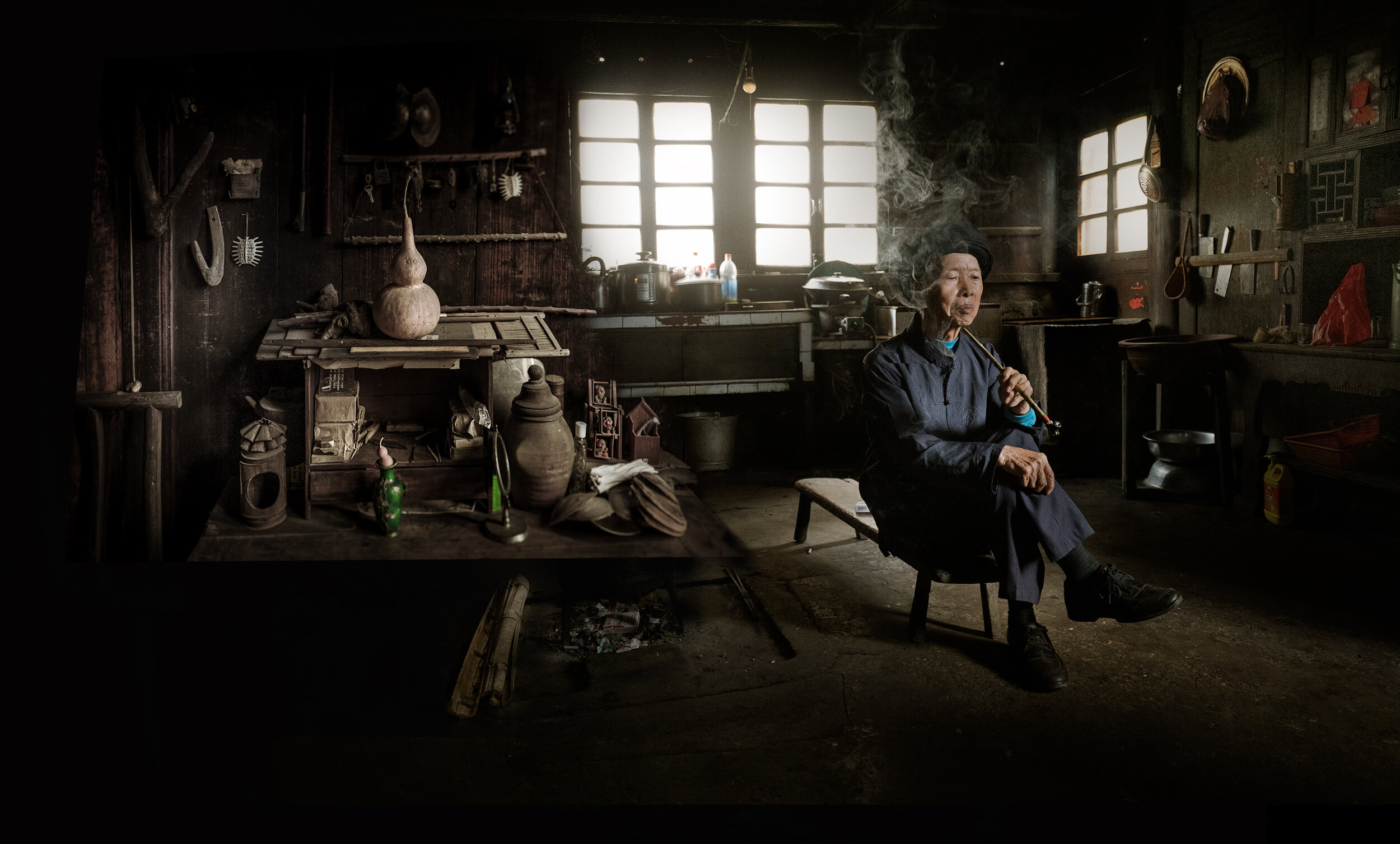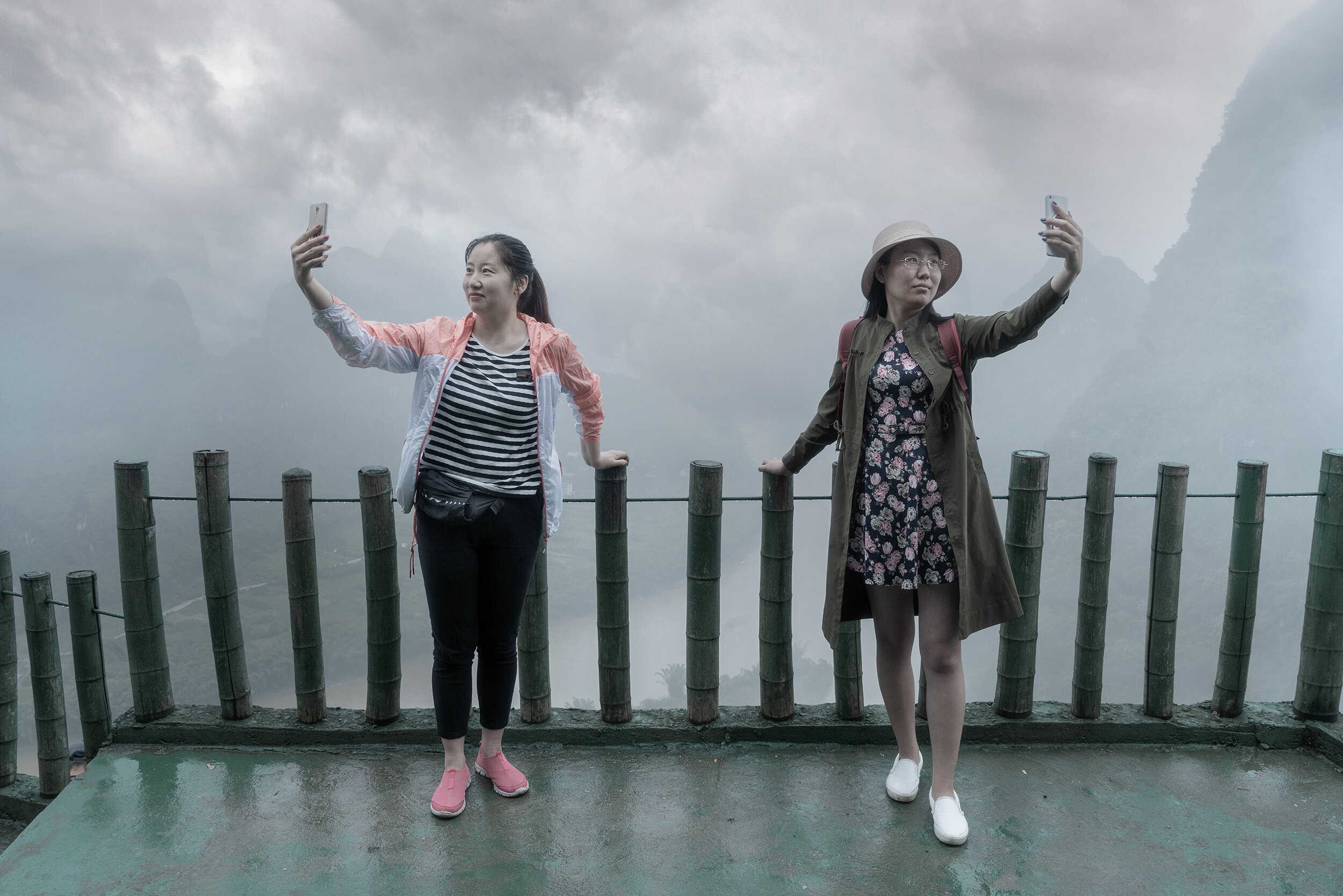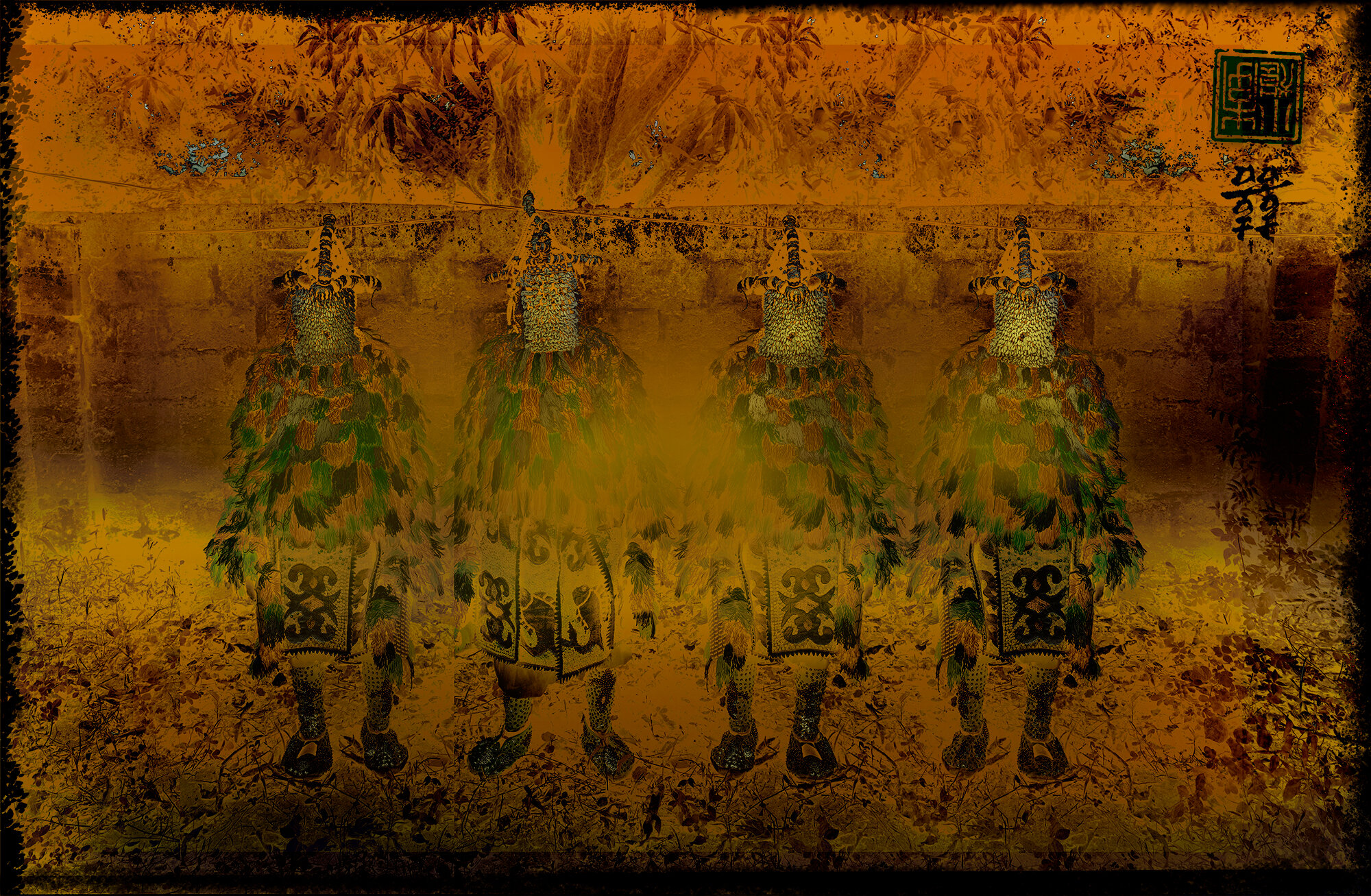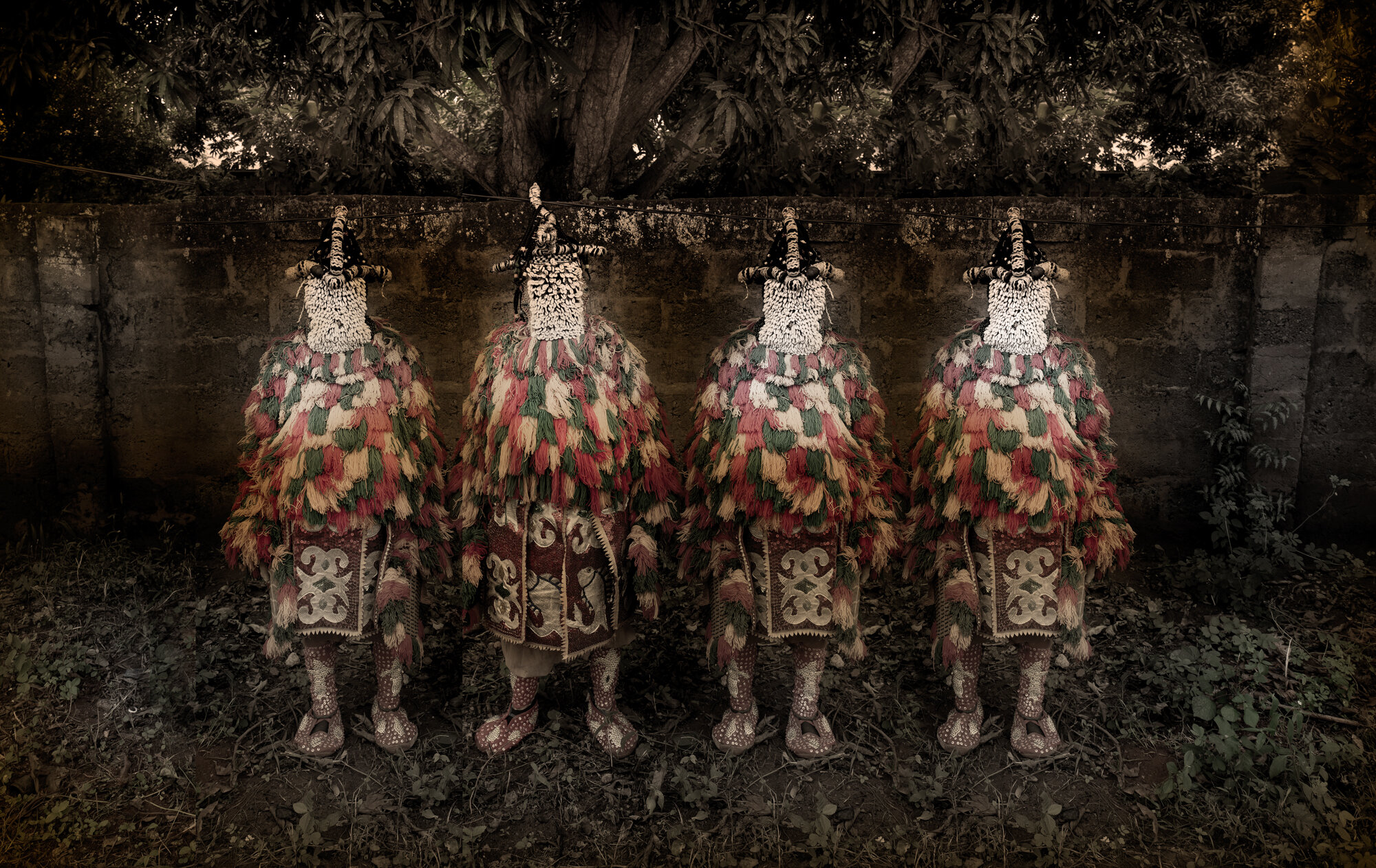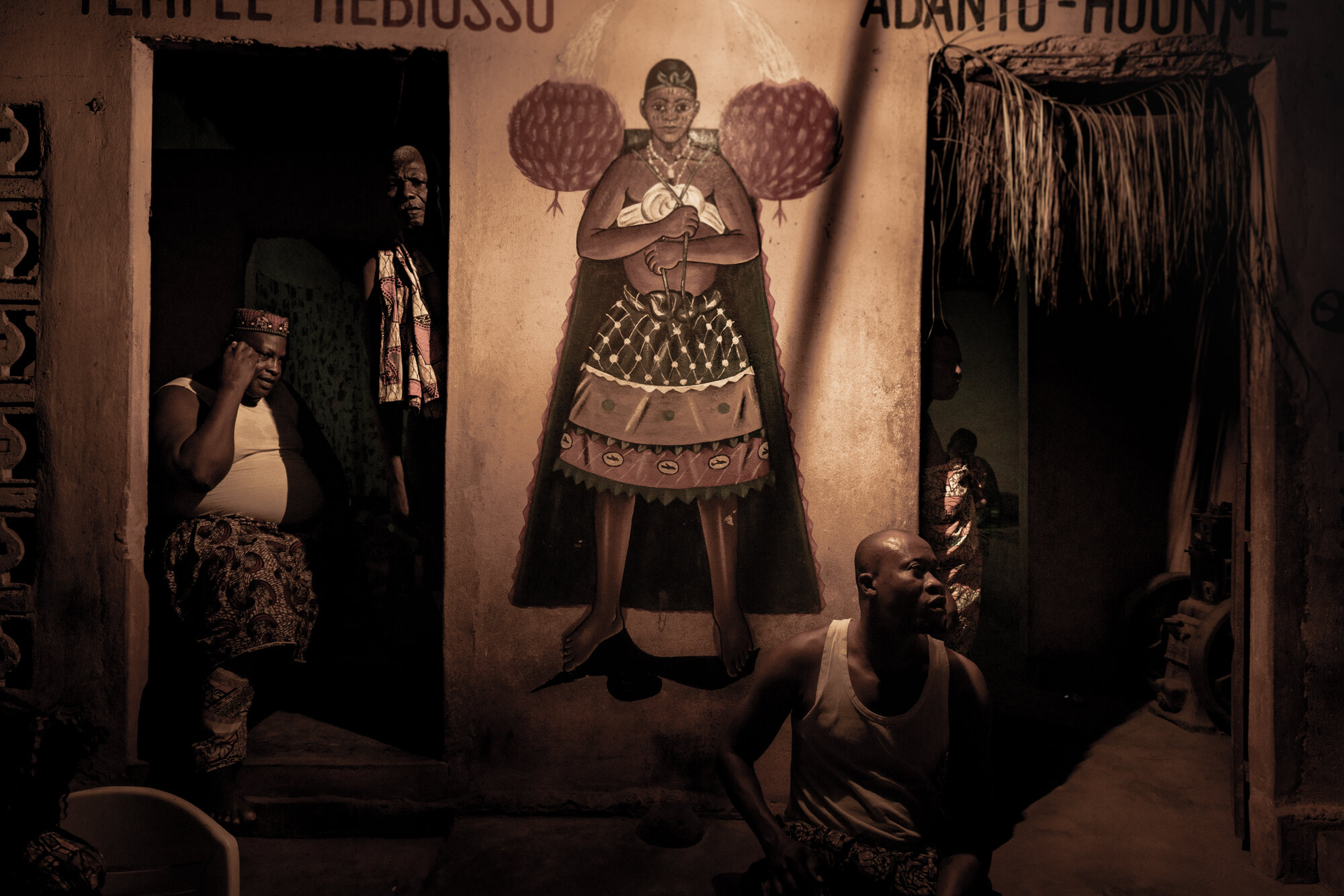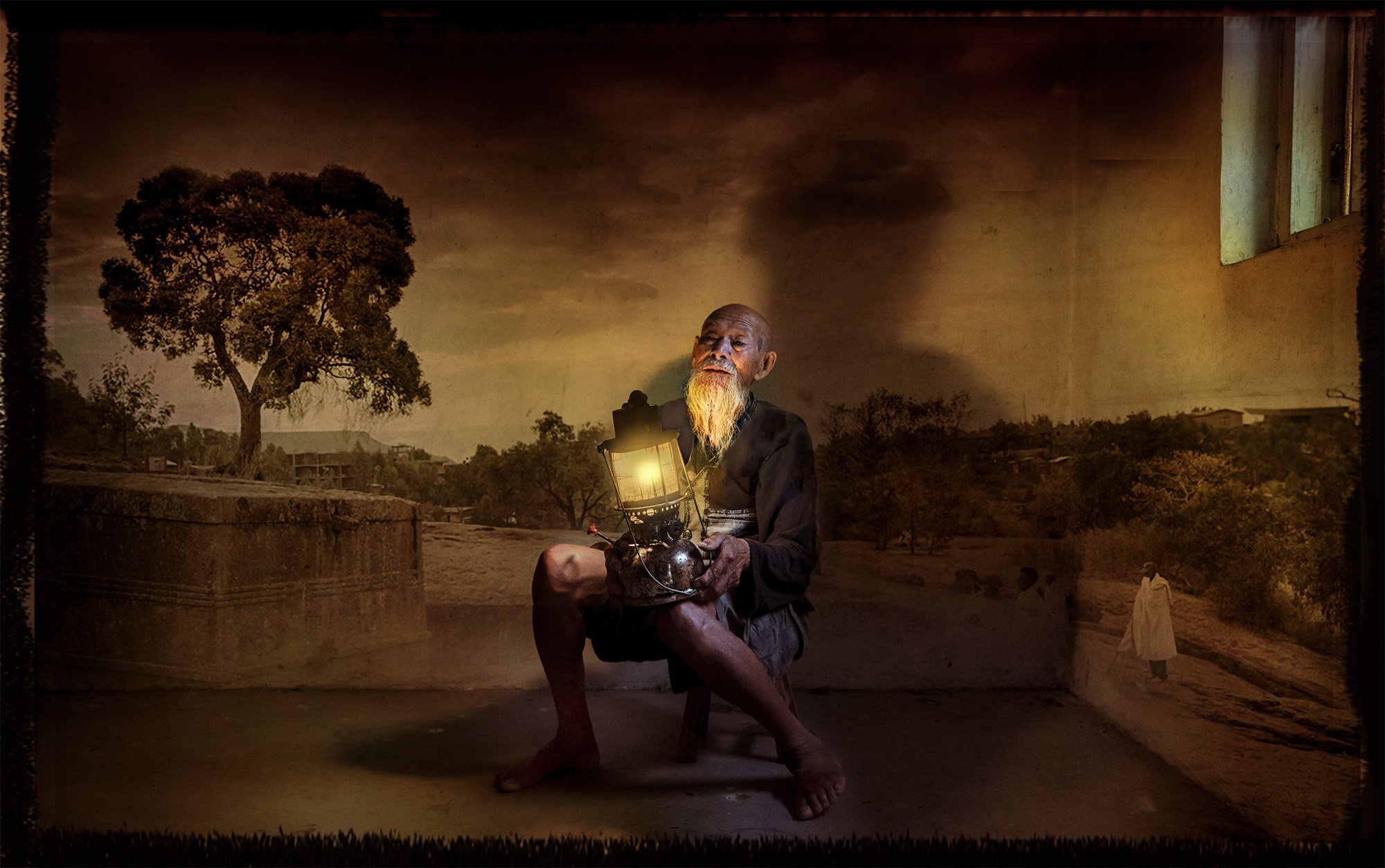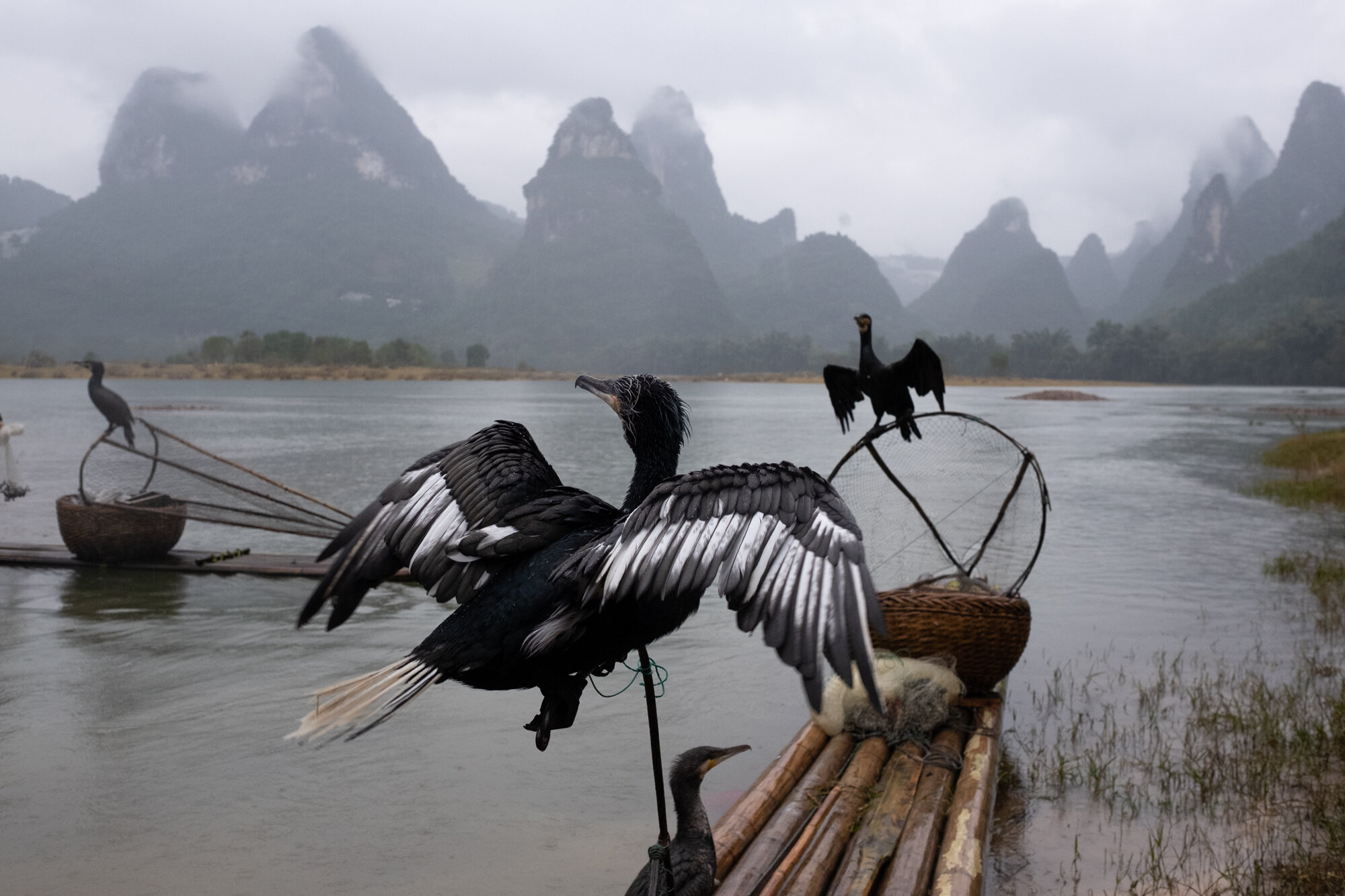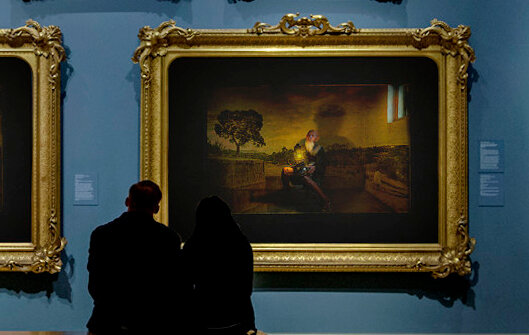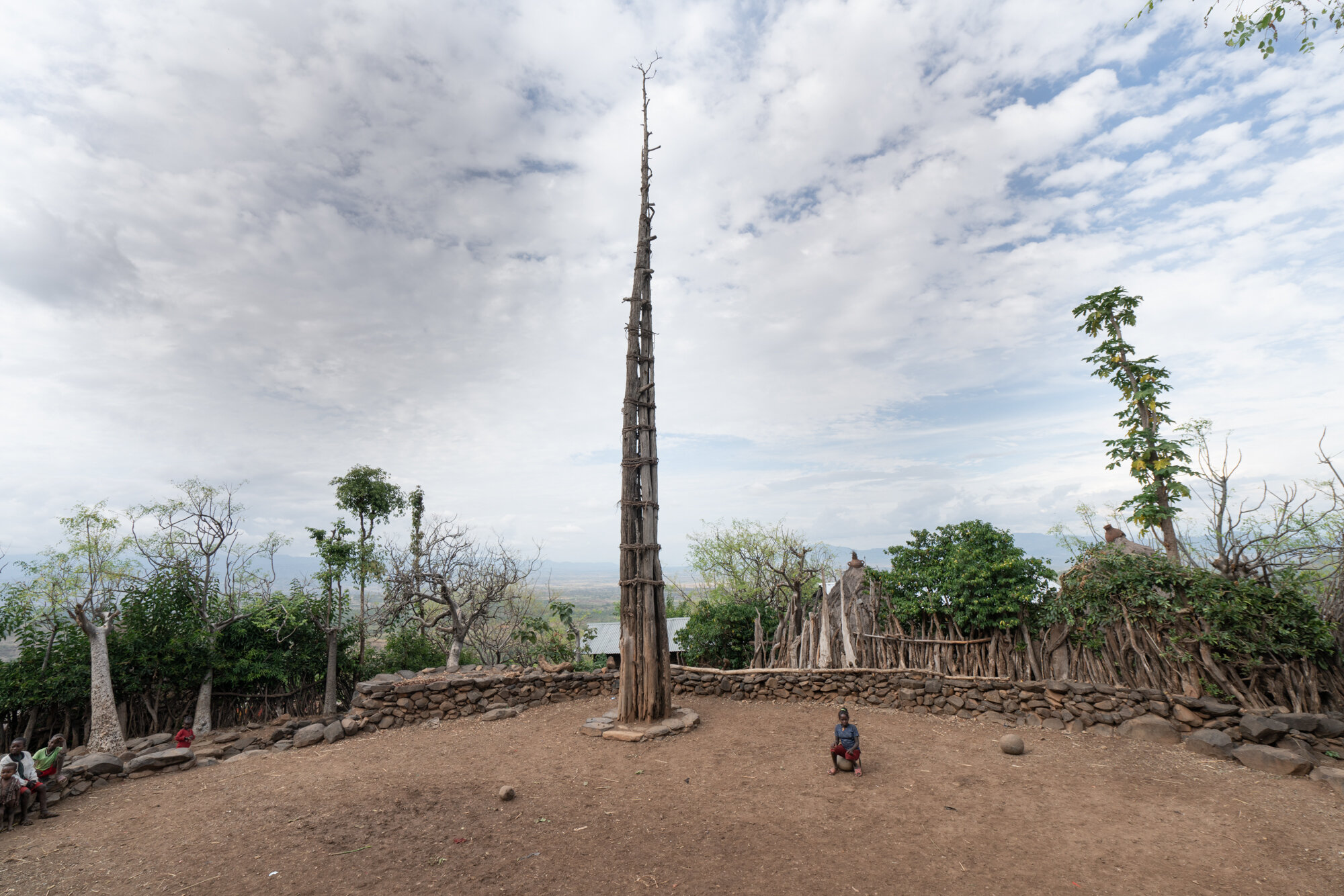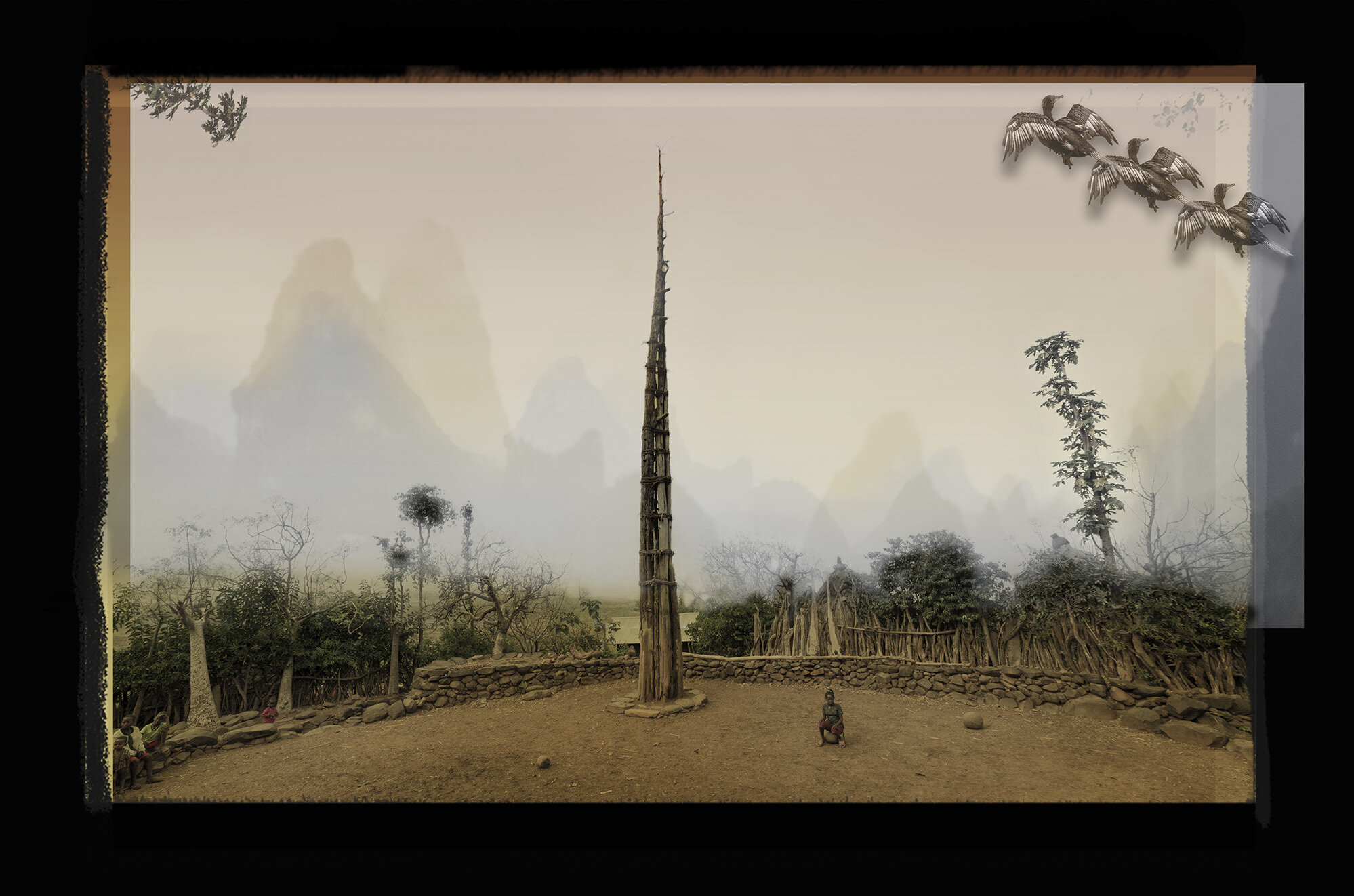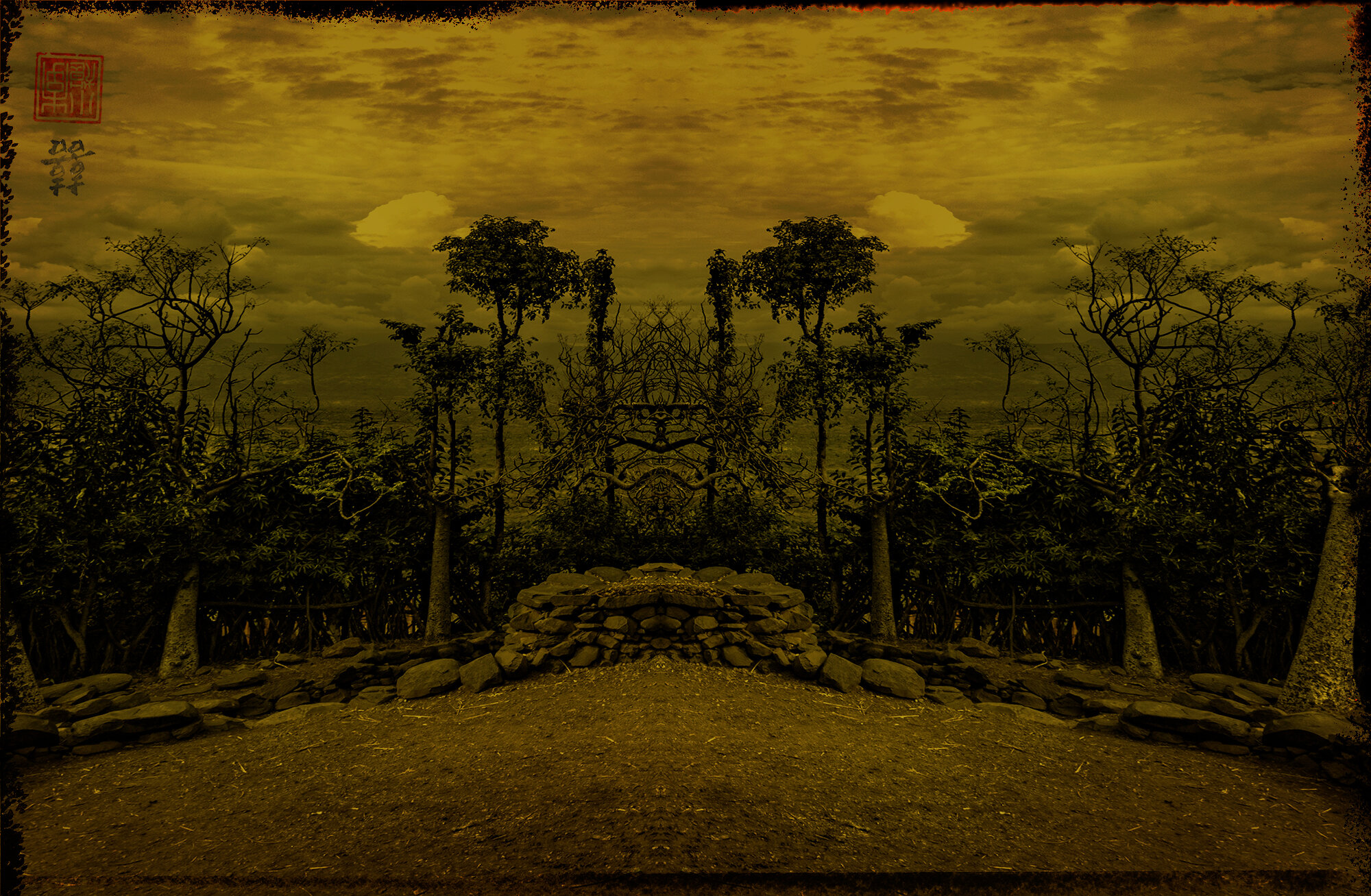“ I give you the truth
in the pleasant disguise of illusion
”
The Magician- Neo-orotone . Work on glass and 23.7k Gold
I would like to reach the limit between what is a fictitious image presented as such and the trompe l'oeil of representing something fully credible by following the usual clichés. I like to keep a subtle irony. The problem is that too much subtlety ends up being inappreciable (and unappreciated) and looking for obviousness could end as a pastiche. My game would consist of finding the MacGuffin that can disorient or distract the viewer by offering something fictitious that borders on the real. A reality so fabricated that it ends up being hardly believable. All of this connects to my travels where I find myself constantly fabricating images that match the preconceived idea that we - the clients and myself - have of what a Chinese person is in traditional China, an Indian in traditional India. And in the end it's not about what they are, it's about what we want them to be in order to fulfill our romantic expectations.
- harry fisch
““There is nothing more certain than
what can not be seen...”
The smoker - Neo-orotone . Work on glass and 23.7k Gold
“The real voyage of discovery consists not in seeking new landscapes, but in having new eyes.”
Self-she .- Neo-orotones, work on glass and 23.7 k gold.
“The artistic image is not intended to represent the thing itself, but, rather, the reality of the force the thing contains.”
Double Twins.- Neo-orotone, work on glass and 23.7 k gold.
“There is no end.
There is no beginning. There is only the infinite passion of life.”
The last fisherman.- Neo-orotone, work on glass and 23.7 k gold.
“The only difference between reality and fiction is that
fiction needs to be credible.”
Tsehay in wonderland .- Neo-orotone, work on glass and 23.7 k gold.
“Not all those who wander are lost”
Non Plus Ultra .- Neo-orotone, work on glass and 23.7 k gold.
““The trouble with fiction,” said John Rivers, “is that it makes too much sense. Reality never makes sense.””
